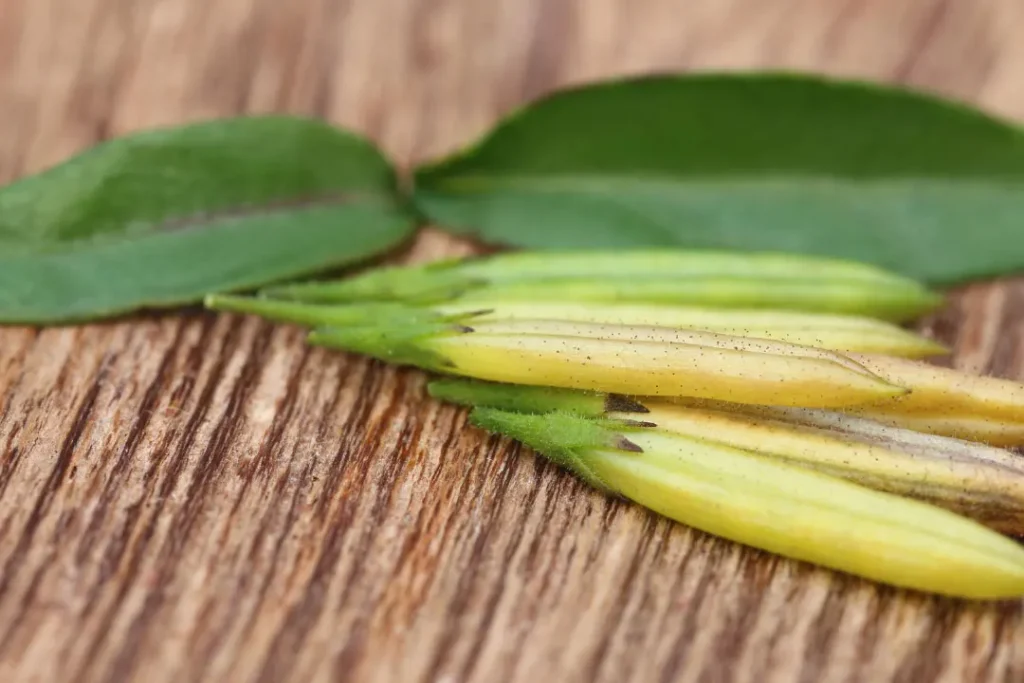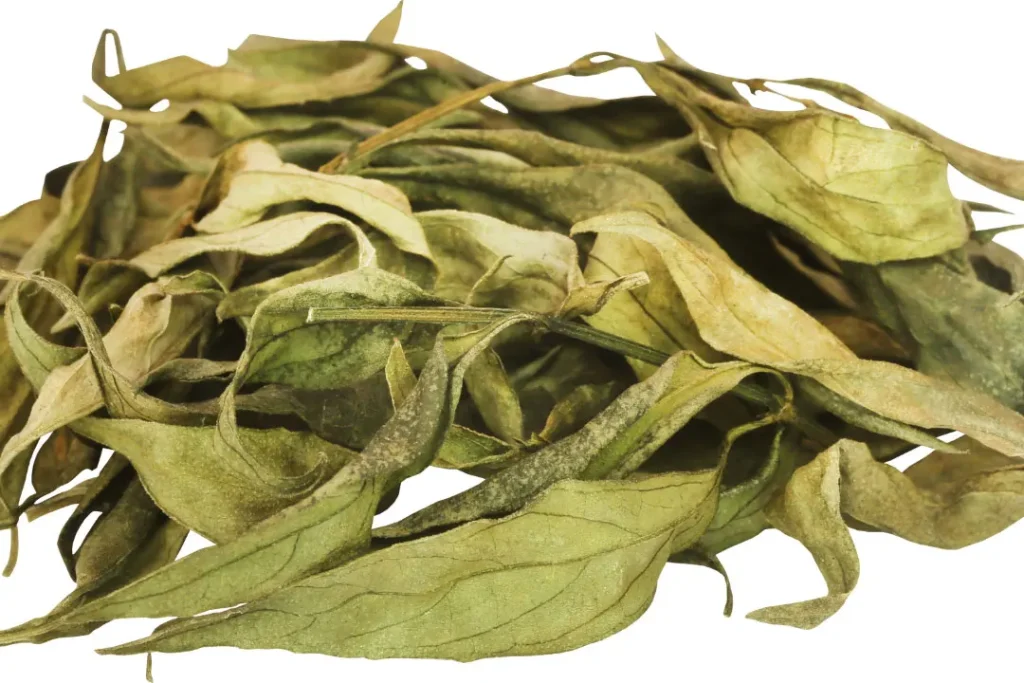The powerful plant Swertia Chirata, also called “Chirata,” has been used for centuries in Ayurvedic medicine to treat a wide range of illnesses. The plant is indigenous to the temperate Himalayan area and is a member of the Gentianaceae family. Due to its wide biochemical capabilities and therapeutic potential, Chirata is used in contemporary phytotherapy in addition to conventional Ayurvedic medicine. This article will explore the nature of Chirata, its health advantages, the best dose, any potential negative effects, any possible drug interactions, and how it works in the human body.
You May Also Like:
Finding The Best Alpha GPC Supplement
Vitamin B6: Benefits, Dosage, Side Effects, Drug Interactions, And Other Important Information
Chirata: Benefits, Dosage, Side Effects, Drug Interactions, and Other Important Information is an original (NootropicsPlanet) article.
Nature of Chirata
Active substances may be found abundantly in Chirata. Numerous xanthones, including decussatin, swerchirin, and bellidifolin, as well as numerous bitter compounds, including chiratin and chiratol, make up its main ingredients.
The plant also includes iridoid glycoside swertiamarin. These substances are crucial in helping Chirata exercise its medicinal benefits. Furthermore, Chirata is a powerful antioxidant, anti-inflammatory, antipyretic, and hepatoprotective agent due to the presence of these components.
Health Benefits of Chirata
Chirata’s xanthones and glycosides are the sources of its great antioxidant capability. As a result of these substances’ ability to scavenge free radicals and reactive oxygen species, oxidative stress is decreased. This method is crucial in avoiding oxidative stress-related illnesses such as cancer, diabetes, neurodegenerative diseases, and atherosclerosis.
Chirata’s bioactive substances have potent anti-inflammatory activities. Studies conducted in vivo and in vitro have shown that these substances prevent the production of pro-inflammatory cytokines, which cause inflammation and fever. This system is essential for treating illnesses including fever, respiratory tract infections, and arthritis.
Chirata is widely recognized for having hepatoprotective effects. The plant’s active constituents are known to improve liver function and shield it from hepatotoxic substances, making it effective in the treatment of liver illnesses.
Chirata has been shown in many trials to promote the release of insulin, which helps with the treatment of diabetes. It is thought to increase insulin sensitivity in the peripheral tissues by activating the insulin receptor.

Chemistry of Chirata
Chirata’s extensive phytochemistry is responsible for a wide range of bioactivities. Here are just a few of the many secondary metabolites that the plant is renowned for:
- Xanthonesiridoids
- Secoiridoids
- Flavonoids
- Alkaloids
These substances are distinguished by their varied chemical compositions and important pharmacological characteristics.
The main active ingredients in Chirata include xanthones such as swertiamarin, mangiferin, and bellidifolin. Three benzene rings make up the tricyclic structure of these compounds. Notably, the xanthones in Chirata have been glycosylated, increasing their water solubility and bioavailability, which makes it easier for the body to absorb them and use them to interact with biological targets.
Oleanolic acid and swertisin are two more crucial components of Chirata. Oleanolic acid, a triterpenoid, has noteworthy hepatoprotective qualities, while swertisin, a flavonoid, support the plant’s antidiabetic benefits.
Active Mechanisms of Chirata
The chemical components that Chirata contains are mostly responsible for its pharmacological effects. The xanthones and glycosides, which combat free radicals and lessen oxidative stress, are primarily responsible for Chirata’s antioxidant properties. The suppression of pro-inflammatory cytokines and the modification of different inflammatory pathways are the main causes of the anti-inflammatory effects.
The suppression of cytochrome P450 enzymes, which lowers the generation of toxic compounds and protects the liver, is thought to be the source of Chirata’s hepatoprotective qualities. It further enhances its hepatoprotective properties by modulating the expression of genes linked to liver fibrosis.
Regarding its anti-diabetic characteristics, Chirata increases the action of insulin in peripheral tissues and encourages insulin release from pancreatic cells. This dual action incidentally aids effective blood glucose regulation.

Optimal Dosage of Chirata
Depending on how Chirata is eaten and the condition being treated, different dosages may be advised. 1-3 grams of Chirata powder may be eaten every day to improve overall health.
It is important to speak with a healthcare professional before using medication for therapeutic reasons since the dose may need to be changed depending on the patient’s health state and the severity of the disease.
Side Effects of Chirata
Although Chirata is mostly well tolerated, some people may have minor adverse effects. Particularly if used in large amounts, they could include gastrointestinal discomfort such as nausea, vomiting, and diarrhea. Furthermore, Chirata’s hypoglycemic effects may produce a dip in blood sugar levels, which, if unchecked, might be harmful to those with diabetes.

Potential Substance Interactions with Chirata
Chirata and several medicines have the potential to interact with each other. It may exacerbate the effects of antidiabetic medications due to their blood glucose-lowering qualities, which might result in hypoglycemia.
As a result, it is advisable to use Chirata with care while taking these drugs. Due to its ability to alter platelet aggregation, it could potentially interact with anticoagulant and antiplatelet medications.
Best Use of Chirata
General health and well-being may benefit from incorporating Chirata into everyday activities. However, a person’s health situation and intended usage will determine how they should responsibly take this dietary supplement.
- Overall Wellness: Chirata may be added to a daily regimen at a modest dose of 1-3 grams in powder form for people looking to improve their overall health. It may be consumed orally as a pill, as a tea, or blended with other meals.
- Therapeutic Use: It is advised to speak with a healthcare professional before consuming Chirata for particular therapeutic objectives, such as the management of liver conditions, inflammation, fever, or diabetes.
- Preventive Use: Chirata’s strong antioxidant qualities make it a potential preventative treatment for diseases brought on by oxidative stress. Here, a modest dose that is recommended by a medical professional could be helpful.
Despite its long history of usage and solid safety record, Chirata should not be used in place of standard medical care. Particularly when taken therapeutically or in conjunction with other drugs, it should be used carefully and under the supervision of a healthcare professional.
Chirata’s complex chemistry, which is characterized by a vast variety of bioactive chemicals, is primarily responsible for its powerful bioactivities. Chirata is a great addition to the category of nutritional supplements since its favorable effects are spread over a variety of medical ailments. To maximize their advantages and guarantee their safety, nutritional supplements should be taken sensibly and with expert supervision by your healthcare provider.
More in-depth information and assistance in the creation of innovative treatment approaches would come from further investigation into the molecular processes behind the actions of Chirata’s active chemicals.

Chirata: Conclusion
If used carefully and intently, Chirata can offer tremendous boons on your health and wellness, especially from an anti-inflammatory and antioxidant perspective.
Remember to introduce it slowly and in small doses. Keep an open mind and stay aware of how your body reacts to it. You may find relief from potential imbalances you might not have known you had before inserting Chirata into your supplement plan.
References:
- Swertia chirata- AWonderful Herb. Research Gate. Retrieved from: https://www.researchgate.net/publication/359229981_Swertia_chirata-_AWonderful_Herb
- A Review of Swertia chirayita (Gentianaceae) as a Traditional Medicinal Plant. National Library of Medicine. Retrieved from: https://www.ncbi.nlm.nih.gov/pmc/articles/PMC4709473/
- Swertia. Science Direct. Retrieved from: https://www.sciencedirect.com/topics/pharmacology-toxicology-and-pharmaceutical-science/swertia
Important Note: The information contained in this article is for general informational purposes only, and should not be construed as health or medical advice, nor is it intended to diagnose, prevent, treat, or cure any disease or health condition. Before embarking on any diet, fitness regimen, or program of nutritional supplementation, it is advisable to consult your healthcare professional in order to determine its safety and probable efficacy in terms of your individual state of health.
Regarding Nutritional Supplements Or Other Non-Prescription Health Products: If any nutritional supplements or other non-prescription health products are mentioned in the foregoing article, any claims or statements made about them have not been evaluated by the U.S. Food and Drug Administration, and such nutritional supplements or other health products are not intended to diagnose, treat, cure, or prevent any disease.


